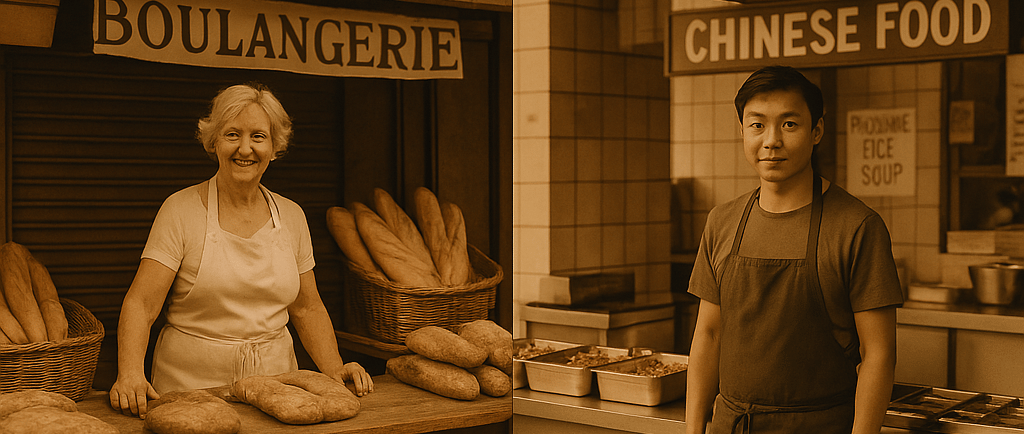Comparison of different cultures around the world with different food service businesses


Food service businesses worldwide are deeply influenced by cultural norms, traditions, and consumer preferences. These cultural factors shape various aspects of the dining experience, including service styles, menu offerings, and customer expectations. Here's a comparative overview of how different cultures approach food service:
1. Service Speed and Dining Experience
United States: American dining culture often emphasizes quick service, especially in fast-food establishments. There's a preference for efficiency, with customers expecting prompt order taking and delivery. Tipping is customary, influencing service speed and quality.
Europe: In contrast, many European cultures, such as those in France and Italy, view dining as a leisurely activity. Meals can extend over hours, with courses served slowly to encourage conversation and enjoyment. Service is attentive but not rushed.
2. Menu Localization and Adaptation
Fast-Food Chains: Global fast-food brands like McDonald's tailor their menus to align with local tastes and cultural practices. For instance, in India, McDonald's offers the McAloo Tikki Burger, catering to vegetarian preferences and avoiding beef consumption due to religious beliefs.
Fusion Cuisine: Culinary fusion arises when immigrants blend their native flavors with local ingredients, creating unique dishes. An example is the California roll in the U.S., which adapts traditional Japanese sushi to suit Western palates.
3. Cultural Perceptions of Food Establishments
Perception of Fast-Food Brands: Cultural perceptions of fast-food brands vary across countries. For example, McDonald's is perceived more favorably in Egypt and Vietnam, while consumers in the U.S. view it more critically. These perceptions influence consumer behavior and brand success in different regions.
Ethnic Restaurant Acceptance: The acceptance and popularity of ethnic cuisines differ globally. In Connecticut, Spanish restaurants are prevalent, reflecting the state's Hispanic population, while French cuisine remains underrepresented, indicating a market gap.
4. Regulatory and Operational Differences
Ownership Structures: Business organization structures vary globally. In countries like Italy and South Africa, owner-managers are common, whereas, in the UK, paid managers are prevalent. These differences affect management styles and operational practices.
Regulatory Compliance: Cultural differences extend to the regulatory sphere, impacting how food safety and operational standards are set and enforced. For instance, halal certification is crucial in Muslim-majority countries, influencing menu offerings and food preparation methods.
5. Evolution and Adaptation of Cuisines
Evolving Tastes: Cuisines adapt over time due to globalization and changing consumer preferences. In Britain, there's a shift from traditional Chinese dishes like chow mein to regional Chinese cuisines, reflecting a more sophisticated palate and greater cultural integration.
Culinary Identity: Food serves as a means to engage with and understand various cultures. The intersection of culture and cuisine shapes individual and collective identities, influencing dining habits and the popularity of certain food service businesses.
In summary, food service businesses worldwide are a reflection of cultural values and societal norms. Understanding these cultural nuances is essential for businesses aiming to operate successfully across different regions, ensuring that their offerings resonate with local consumers while respecting traditional practices.
